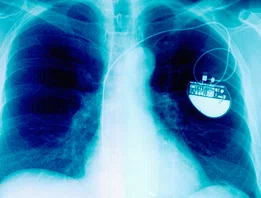


clinical research
Evolving Treatment
Beyond Pharmaceuticals

Despite public health strategies to educate the public about the importance of healthy eating and exercise. Obesity is a major risk factor for diabetes that are growing epidemics.
According to the Center for Disease Control, many adults with obesity have serious chronic disease—58% of U.S. adults have high blood pressure and 23% percent of U.S. adults for obesity is expensive for patients and the health care system. In 2019 dollars, annual medical costs for adults with obesity were $1,861 higher per person than adults with healthy weight. For adults with severe obesity, the excess costs were $3,097 per person. This accounts for nearly $173 billion in medical expenditures in 2019 dollars.
58%
The co-occurrence of cardiovascular risk factors including obesity, hypertension and insulin resistance, also known as the metabolic syndrome, is associated with two major liver diseases—the metabolic dysfunction-associated steatotic liver disease (MASLD) and its more advanced form—the metabolic dysfunction-associated steatohepatitis (MASH). Characterized by excessive fat build up in the liver, the symptoms of MASLD/MASH are alarmingly non-existent in some cases.
These diseases are crucial since several cardiovascular conditions share risk factors, mechanisms, and pathways through which the disease manifests.
Here are some facts:
- Presently, MASLD affects nearly 25-30% of U.S. adults.
- MASH affects nearly 5-11% of U.S. adults and is a leading indicator for liver transplants.
- The prevalence of MASLD and MASH is expected to rise—there are no approved treatments.
Mazen Noureddin, MD, MHSc, Professor of Medicine, conducted a first-of-its-kind feasibility study to explore the use of a novel prescription digital therapeutic (PDT) in this patient population. He concluded that PDTs can be a scalable tool to address unmet behavioral treatment needs in MASLD and MASH. This study was recently published in the peer-reviewed journal Gastro Hep Advances.
PDT is a convenient, user-friendly, yet sophisticated, software application that remotely delivers physician-prescribed clinical interventions. In contrast to wellness apps, PDTs are Food and Drug Administration-approved therapeutics which can be accessed only with a prescription from a healthcare provider. Developed by Better Therapeutics, Inc., the PDT in this study was used to deliver cognitive behavior therapy (CBT) to treat cardiometabolic disease.
The standard of care for the prevention and management of MASLD and MASH includes reducing the cardiometabolic risk via lifestyle behavioral changes. Recommended strategies include exercise and dietary interventions to promote healthy eating habits and a healthy lifestyle in an effort toward weight loss. Unfortunately, most patients are unable to change their behavior despite the ample evidence regarding the importance of a healthy lifestyle.
“Behavior change is notoriously difficult to facilitate and maintain in clinical practice. Providers struggle to provide effective behavioral counseling due to the lack of time and resources needed to help patients implement and maintain targeted, personalized behavioral therapy to improve MASLD or MASH. Moreover, many patients struggle to translate clinical recommendations into meaningful and sustainable behavioral changes in the absence of structure and support in their day-to-day lives,” explained Noureddin.
Noureddin and his team set out to explore the potential for this novel digital platform to provide a safe, effective and scalable treatment option for MASLD and MASH patients. Their secondary objective was to gather usability data and qualitative feedback from participants to enhance the understanding of tolerability and product refinement toward subsequent study planning.

To our knowledge, this is the first study that uses a CBT-based digital therapeutic in MASLD/MASH, which demonstrated clear and consistent improvements in liver health in patients with MASLD and MASH in a broad set of validated biomarkers, including MRI-PDFF, FibroScan, weight, and several blood biomarkers. While further research is needed to establish peak effectiveness, the totality of positive efficacy, safety and usability data observed in this feasibility study raises the potential that this PDT may help address the significant unmet clinical and public health needs observed in MASLD/MASH by providing scalable, accessible and effective behavioral therapy.

Mazen Noureddin, MD, MHSc
Professor, Medicine
A novel form of CBT was delivered in this study that targeted beliefs and behaviors related to improvement in healthy lifestyles. Specifically, the CBT took a psychotherapeutic approach to effect lasting shifts in behavior and identity with the intent to reduce various metabolic risk factors.
To inform the risk-benefit assessment of this unique therapeutic, Noureddin’s conducted a prospective, open-label, proof-of-concept study at two specialty hepatology clinics at the Arizona Liver Health Research Center. Study participants included 18–75-year-olds diagnosed with MASLD or MASH. Notably, the mean age was 48 years and 77% were female. Inclusion criteria included possession of a smartphone capable of running the PDT app, a FibroScan controlled attenuation parameter (CAP) score of greater than 274 dB/m, and a body mass index of greater than 30 kg/m2. Exclusion criteria included a history of drug or alcohol abuse, other liver diseases and an inability to read or comprehend English (since the PDT is available in English only).
Participants used the PDT at will to access behavioral lessons and skill-based exercises during the study period of 90 days. Various indicators of liver health were measured before and after this period, which included the magnetic resonance imaging proton density fat fraction (MRI-PDFF) to measure liver fat accumulation and the Centers for Disease Control and Prevention’s Healthy Days Core Module survey to collect health-related quality of life information.
The study results indicated high levels of patient satisfaction and engagement.
“To our knowledge, this is the first study that uses a CBT-based digital therapeutic in MASLD/MASH, which demonstrated clear and consistent improvements in liver health in patients with MASLD and MASH in a broad set of validated biomarkers, including MRI-PDFF, FibroScan, weight, and several blood biomarkers,” noted Noureddin. “While further research is needed to establish peak effectiveness, the totality of positive efficacy, safety and usability data observed in this feasibility study raises the potential that this PDT may help address the significant unmet clinical and public health needs observed in MASLD/MASH by providing scalable, accessible and effective behavioral therapy.”
PDTs present a cost-effective option beyond traditional pharmaceuticals to potentially improve behavior toward healthier lifestyles and eating habits thereby reducing the risk of liver diseases, obesity, diabetes and other serious ailments that contribute greatly to the current economic burden. In the post-COVID era, PDTs and other digital health technologies could potentially evolve medicine as well as lower costs due to major diseases.
Noureddin plans to validate the study results in a larger randomized controlled trial in the near future.
“There is great potential for a system of care where PDTs are prescribed as a first-line treatment or in conjunction with pharmacologic agents to enable patients to reach treatment goals and improve quality of life,” Noureddin said.
Naim Alkhouri, Katherine Edwards, Mark Berman, Heather Finn, Rafael Escandon, Paul Lupinacci, Nicole Guthrie, Angie Coste, Jesus Topete, Mazen Noureddin. A Novel Prescription Digital Therapeutic Option for the Treatment of Metabolic Dysfunction-Associated Steatotic Liver Disease. Gastro Hep Adv. 2023 Oct 1;3(1):9-16. doi: 10.1016/j.gastha.2023.08.019.
The authors would like to thank the staff of Arizona Liver Health Research Center for their partnership in this study and Better Therapeutics, Inc. (study sponsor and intervention developer) for its support and creation the platform version that was used in this study.
Abanti Chattopadhyay, PhD
December 2024
Related Articles







